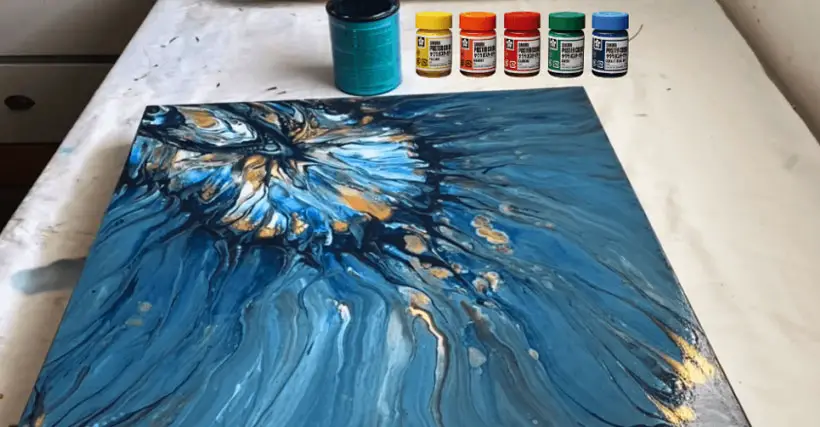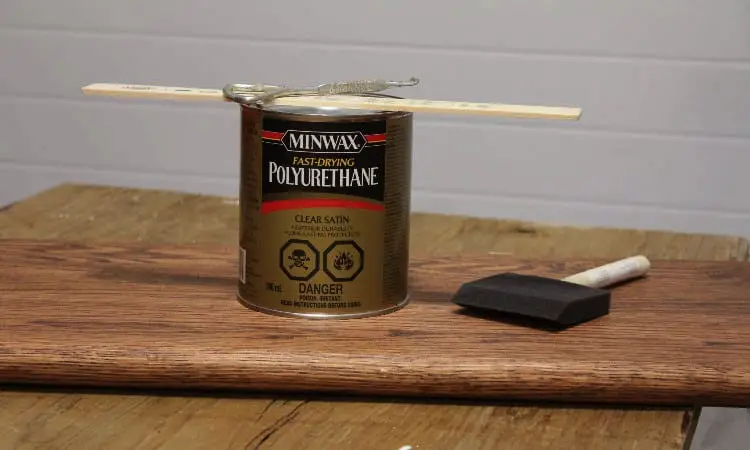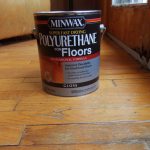Can You Put Polyurethane Over Acrylic Paint? Full Explanation
Acrylic paint is one of the colors that allows polyurethane to be applied over it. Though, only the dark color of acrylic paints depicts an aesthetic view when it is coated with polyurethane. So, selecting the color of the paint is essential for getting an aesthetic view of the surface.
But can you put polyurethane over acrylic paint? To put it simply, yes. But if you want it to look good and be accurate, you will need to follow the steps for painting and sealing the coat precisely. Otherwise, it will look sloppy and dull.
In this article, you will get the exact guidelines of the process required to put polyurethane over the paint. So, keep reading the article, you won’t need to go through any further queries about applying polyurethane over acrylic paint.
Can You Put Polyurethane Over Acrylic Paint?
Well, the reason behind this “yes” is very simple: the material polyurethane is suitable to attach over acrylic paint. Since polyurethane has Isocyanates, Polyols, and other components that help to join the polyurethane with the acrylic paint.

As you know, you can put polyurethane over acrylic paint. You also should know the steps of the coating and putting process. All of these steps are very simple and easy to follow and we’ll discuss them in a while.
However, you should also know that polyurethane is very important. Because it helps in protecting the surface of your painting area and creating a glazing effect on the painting.
How to Apply Polyurethane Over Acrylic Paint?
There are a few steps for how you can put polyurethane over acrylic paint. And every step is necessary to increase the durability of protection and the dazzling color. The steps are divided into three phases: first, middle, and last steps.

1. First-Stage
A painter should focus on this aspect before starting to put polyurethane over acrylic paint.
Select the best polyurethane
There is a variety of polyurethane being used as a coat but the best-selected one is oil polyurethane. That’s because this helps to be deepest and increases the contrast of the color of the underlying surface.
But these oil-based paints give extreme benefits over the darkest color such as deep green, blue, black, etc. Now, if you use an oil-based polyurethane over any light-color painting, it may not be able to glaze. For example, white, yellow, or pink.
Also, due to its water-resisting capacity, oil-based polyurethane is best suited for the exterior surface of a building. So, before buying any polyurethane coat to use over acrylic paint, make sure the coat looks milky white in the tin but drys clear.
Focus on other equipment
After buying the best polyurethane, you need to keep in mind a few basic things. The first is the way to apply it because you can apply the oil either with a painting brush or a spray.
Moreover, to apply the polyurethane over a large area or surface, you should use a spray machine since a brush is not enough for painting a huge surface. Thus, taking an area measurement before going to paint can be the best thing for a painter.
Wait for Dry Acrylic paint
Last but not least thing is to do before applying any polyurethane is to wait till dry the previous paint. As we know, acrylic paint takes a different amount of time to dry.
If the acrylic paint layer remains thick, you need to at least wait for 30 minutes. But if the layers remain thin, you must give it several hours to become dry.
However, this is the most crucial part you need to take into consideration because if you can put polyurethane over acrylic paint, only the acrylic becomes dry-appropriate. Otherwise, the coat will not protect as you expect.
2. Mid-Stage
This is the central and crucial aspect because, in this stage, you are going to apply the coat over the paint. So, be careful about the instructions for this step.
Sealing Acrylic Paint with Polyurethane
After finishing the acrylic paint and drying, you have to ensure its surface by coating it. At this time, you need to apply at least 2 to 3 coats of polyurethane over the surface so that it can be completely sealed and ready to use.
Ready up the surface
After sealing the paint with a coat of polyurethane, you need to be very concise and careful about the cleanliness of the surface. Therefore, you can wipe the sealed area by using the dirty cleaner with trisodium phosphate (TSP). TSP is the best cleaner for this surface cleaning.
You need to be careful because if you apply polyurethane over any dirty thing, it can seem domed when looking at the surface.
Apply polyurethane
Now, you are going to know the steps on how you can put polyurethane over acrylic paint. So, keep reading and find the best way to accomplish this task.

Step 1: Choose a light sandpaper with a 220-grit. Now, rub the surface again to remove any unnecessary shaft and to create a texturing vibe on the surface.
However, at the end of rubbing, again clean the surface for another time.
Step 2: As thinly as possible, apply a coat of polyurethane over the texture you have made and give it time to fully dry. You can use the appropriate method (brush/Spray) for this coating.
Step 3: For the second time, use another piece of fresh sandpaper with 220 grit to clean the surface and add another layer of texture.
Step 4: Clean the texture again so that the upcoming coat will accept the texture without any barrier of dust.
Step 5: Coat again with a thick layer of coat. And take the required time to dry it.
Now, if you think the coat is smooth enough, you should not go for another round. Because adding more than 2 to 3 layers can decrease the glassiness and the contrast of the acrylic paint.
3. last-Stage
In the last stage of this process, you just need to do the handiwork of cleaning so that it remains clean and glazed.
Wipe out splatters
Oftentimes, we can see that many splatters can be seen over the main coating, such as tiny bubbles and subtle dust. So, you need to keep wiping it out regularly for at least a few days so that there will not be any tiny bubbles or dust.
If you’re exploring the compatibility of polyurethane with surfaces painted with acrylic paint, our article on can you use polyurethane over chalk paint might provide insights that could assist in making informed decisions for your painting projects. Additionally, if you’re wondering about using polyurethane over surfaces previously finished with polycrylic, our guide on can you put polyurethane over polycrylic considerations is here to offer guidance. We understand the importance of achieving optimal finishes and addressing specific application scenarios, and our comprehensive resources are designed to help you navigate and make informed choices for your woodworking endeavors.FAQs
In this section, you are going to get the answers to the most important questions regarding polyurethane and acrylic paint.
Q: How many types of polyurethane can you put over the acrylic paint?
There are two types of polyurethane that you can use to put over any acrylic paint such as oil-based polyurethane and water-based polyurethane.
Q: How long does polyurethane paint last?
Perfect polyurethane paint can be durable for three to six years. Often, it can be less because you are not following an accurate process.
Bottom line
So, now you already know whether can you put polyurethane over acrylic paint or not. So, you need to be very careful when coating, sealing, bruising, buying the best polyurethane, and applying it over the surface.
Finally, remember the fact that there will always be some glare on the surface after applying the polyurethane appropriately. If it is not perfect, there will be a lot of dust, bubbles, and other splatters within the coating of the polyurethane.




